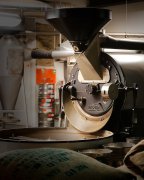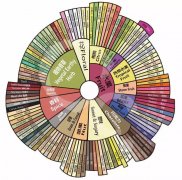How to learn a cup of tasting coffee? Find the ideal place for tasting
Learning how to taste coffee and remember the taste of coffee can not only make you look very professional, but also greatly improve your coffee experience. Beginners who are new to coffee tasting will find it impossible to remember so many mouthful professional words, but with a little training in your tongue and memory, you can also become a cup tester. The more flavors you can tell from coffee, the better your ability to identify coffee varieties.

Here are the five steps I have summed up for coffee tasting.
Step 1: find the ideal place for tasting
The first thing you need to do is to find a local baking studio, coffee shop or coffee association that holds regular cup test activities. Try and experience as much as possible. It is not easy to find the ideal tasting place, especially for coffee lovers who live in remote areas. But remember, as long as you look for it with your heart, you will find it.
Step 2: download or purchase a coffee flavor wheel (Flavour Wheel)
I personally use the Coffee Flavor Wheel drawn by Counter Culture Coffee. This "flavor wheel" is easy to understand and contains a very comprehensive variety of flavors. You can download it directly from his website, then zoom in to the ideal size and post it on your wall. Be sure to learn and memorize each flavor over and over again at home. Be sure to take it with you when you take part in the cup test.
Step 3: master the distribution of taste perception
Can't wait to taste the coffee? Don't worry. The first thing you need to do is to master the distribution of taste perception on the tongue. When tasting coffee or any other kind of drink, pay attention to the perception and feeling of the tongue to the taste. Which part of the tongue can taste sweet? And which part can taste bitterness? You can train your tongue while referring to the above diagram. When you taste a certain taste, be sure to write it down, and over time, you will be able to find out the rules.
Although it is still controversial in the scientific community that different parts of the tongue have different levels of taste perception, I think training and mastering the distribution of taste perception will help to improve the level of taste. If you find it difficult to taste coffee in the first place, try training your tongue with sugar water, salt water, lemonade, etc.
Step 4: learn how to distinguish tastes
What? Why don't you let me taste the coffee at this point? Please don't worry. Please learn how to distinguish the taste before tasting the coffee. Do you know the difference between lemongrass and lemon juice? Without training, it will be difficult for you to distinguish many unique flavors with very subtle differences.
Let's start with the simplest, such as lemons, grapefruit, oranges, apples, strawberries, berries, dark chocolate, salt-baked cashews, butter cookies and so on. Taste them over and over again and remember their taste. Remember not to be impatient, step by step, and engrave each flavor deeply in your mind. You can even add or modify the Wheel of Flavor according to your personal experience.
I think the best way to train taste memory is to start with sweet fruit, then sour fruit, then chocolate, then nuts, and finally butter cookies. Record your feelings at the time of each taste, and combine with the "taste wheel" to constantly train your ability to distinguish the taste.
Step 5: tasting coffee
Okay, now you can start tasting the coffee. First of all, you must clean your mouth with water or white bread. Second, make sure the Wheel of Flavor is at hand.
Next, record the variety of coffee, such as Cedamo, Ethiopia, etc. Refer to the tasting instructions for this variety of coffee and make sure that the flavors mentioned in the instructions fall within your taste memory, such as raspberries, caramel cookies and butter dark chocolate. When buying coffee, if there is no tasting and making instructions on the bag, be sure to ask the staff in the store.
The preparation work is done, and now start tasting the coffee! When tasting coffee, follow these steps:
1. Take a sip of coffee and record your first impressions (such as water, fruit, citrus, nuts, etc.) and which part of your tongue you tasted
two。 Take another sip to enhance the concentration of the taste and modify what has just been recorded
3. Take a sip of coffee and inhale as loudly as possible! Inhalation can spray coffee evenly on the surface of the tongue, increase the oxygen content in the mouth and enhance the sensitivity of oral taste.
4. Take a big sip of coffee and let it stay in your mouth for 5 seconds before swallowing. At this point you should be able to recognize all the flavors in the coffee. Don't forget to write down what you learned at that time!
Mastering the skills of coffee tasting requires a long time of study and training. Coffee brings us not only delicacy, aroma and caffeine, but also the balance and restriction between different tastes. Only by experiencing the tiniest taste differences in coffee can your coffee experience go to the extreme. Especially when you come across a new variety of coffee, keep trying to describe the taste of coffee, you will find this process fun!
Important Notice :
前街咖啡 FrontStreet Coffee has moved to new addredd:
FrontStreet Coffee Address: 315,Donghua East Road,GuangZhou
Tel:020 38364473
- Prev

The difference between individual Coffee and mixed Coffee basic knowledge of Coffee
The difference between individual items and matching is like the difference between monochrome and colorful oil paintings. Single drink also has a pleasant taste, but beauty is beautiful, but the final monotonous taste, lack of thick. On the other hand, the match is like a very full oil painting, which is composed of multiple tones and is a cup of coffee that makes people feel like a story. I'm not sure if this is true insight or nonsense, so this article is
- Next

How to learn coffee flavor wheel? A flag that symbolizes coffee culture
As a player, you probably waste more time on a particular side than the barista. Or will my understanding help you? For me, the flavor wheel is: 1. A flag that marks coffee culture. As you know, every country has a flag for every country. The flavor wheel chart is the flag of fine coffee. Start with the shepherd story.
Related
- Detailed explanation of Jadeite planting Land in Panamanian Jadeite Manor introduction to the grading system of Jadeite competitive bidding, Red bid, Green bid and Rose Summer
- Story of Coffee planting in Brenka region of Costa Rica Stonehenge Manor anaerobic heavy honey treatment of flavor mouth
- What's on the barrel of Blue Mountain Coffee beans?
- Can American coffee also pull flowers? How to use hot American style to pull out a good-looking pattern?
- Can you make a cold extract with coffee beans? What is the right proportion for cold-extracted coffee formula?
- Indonesian PWN Gold Mandrine Coffee Origin Features Flavor How to Chong? Mandolin coffee is American.
- A brief introduction to the flavor characteristics of Brazilian yellow bourbon coffee beans
- What is the effect of different water quality on the flavor of cold-extracted coffee? What kind of water is best for brewing coffee?
- Why do you think of Rose Summer whenever you mention Panamanian coffee?
- Introduction to the characteristics of authentic blue mountain coffee bean producing areas? What is the CIB Coffee Authority in Jamaica?

